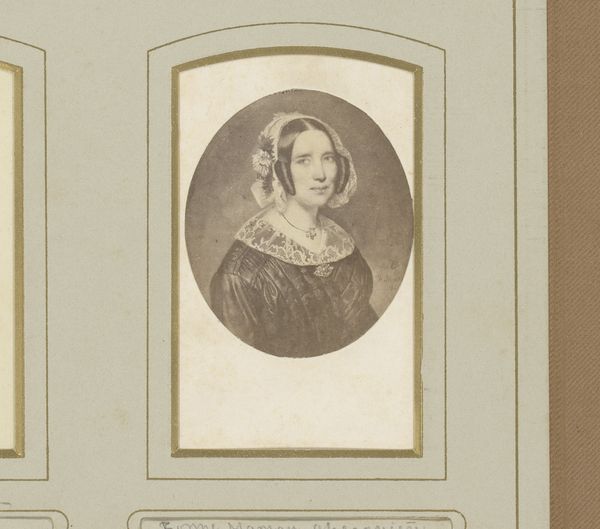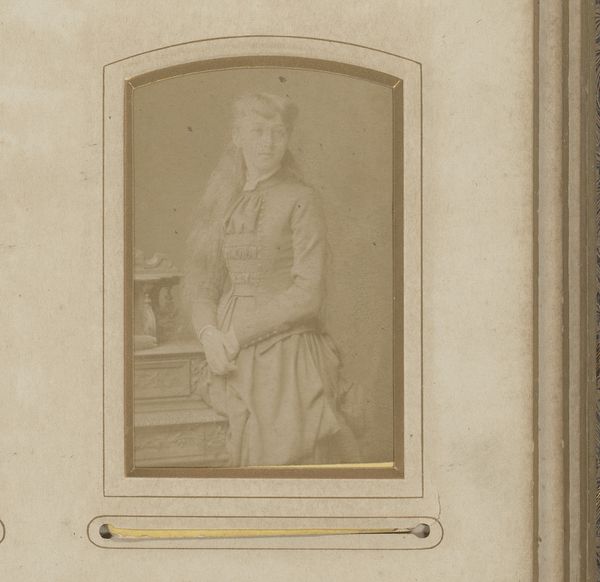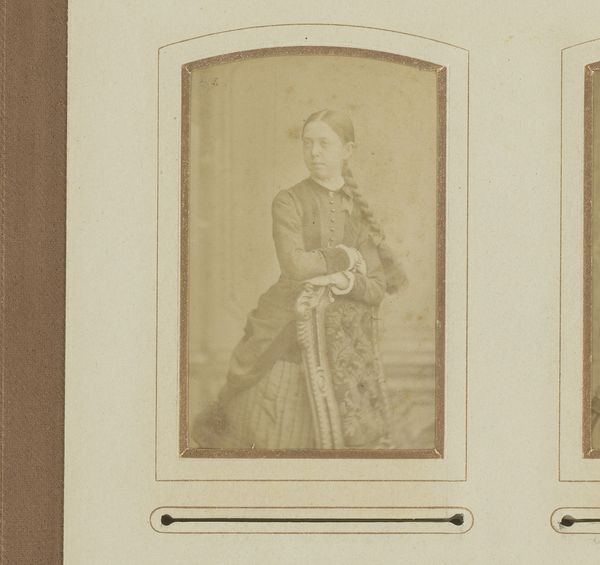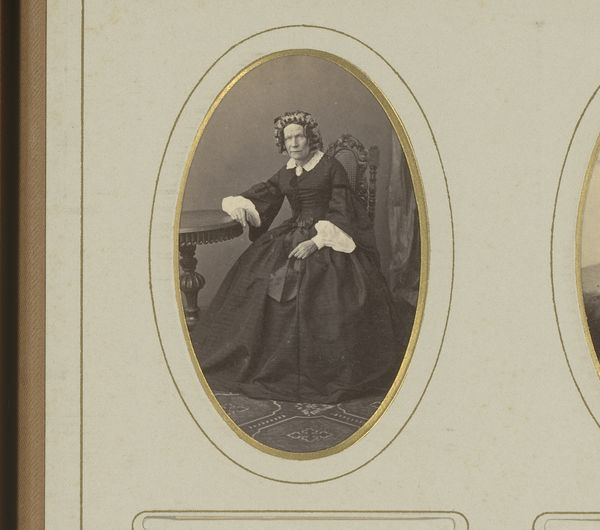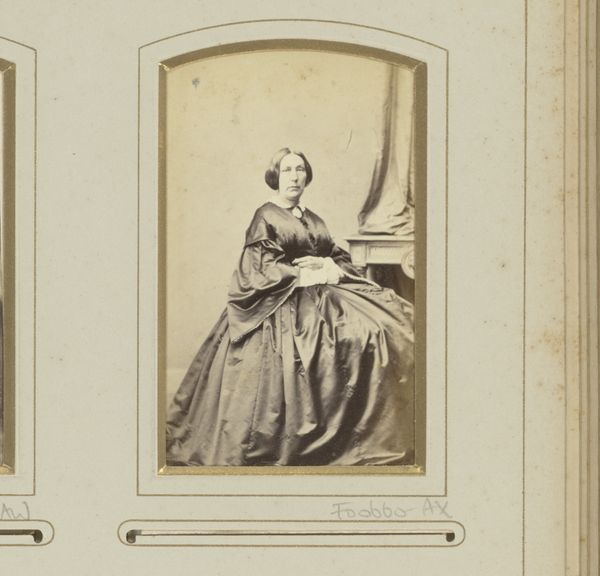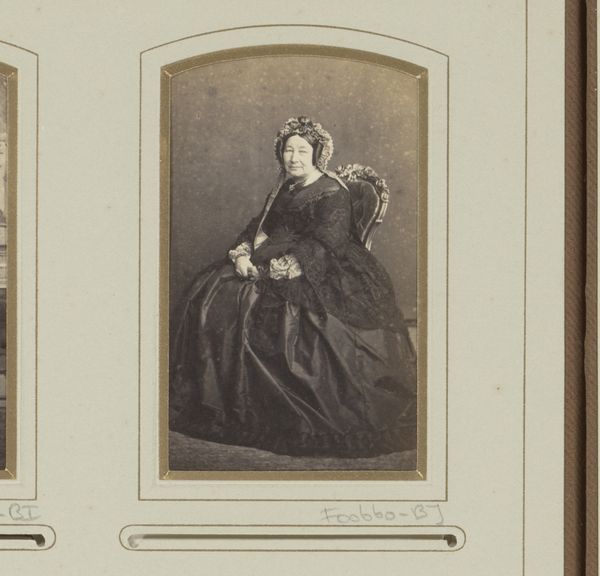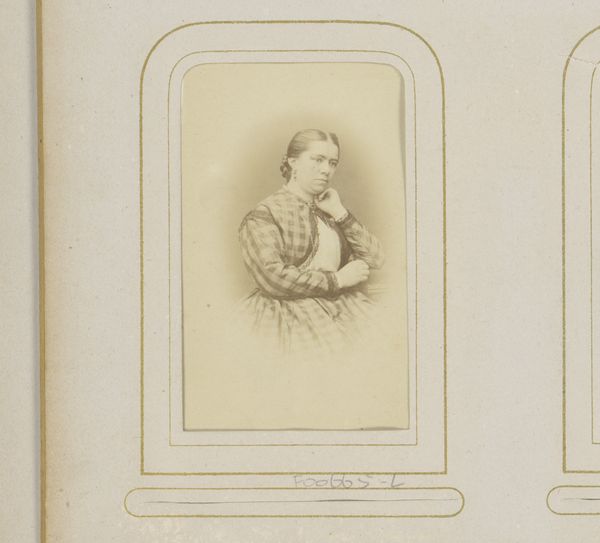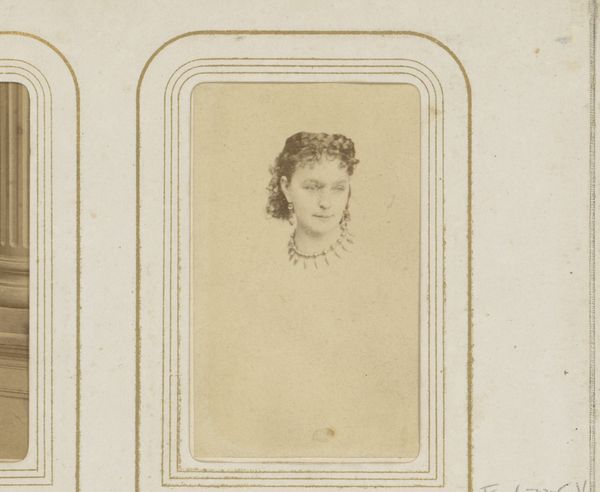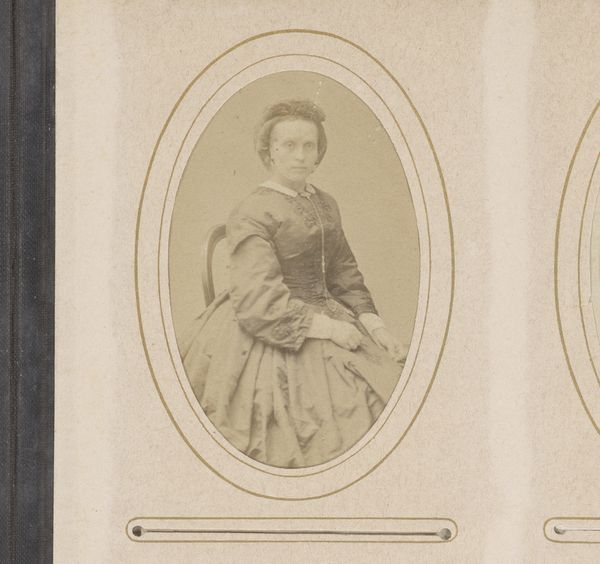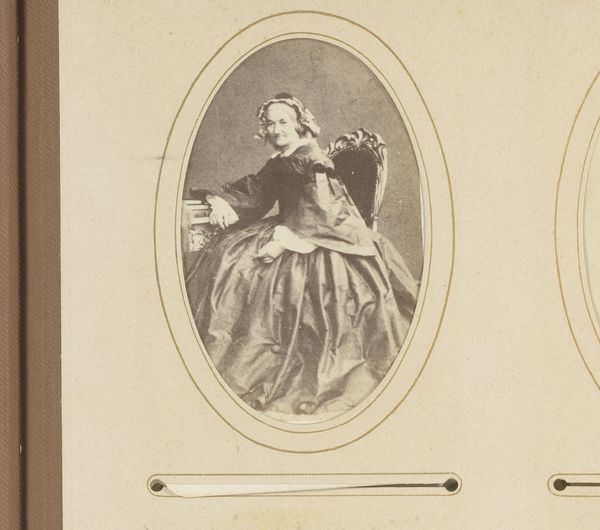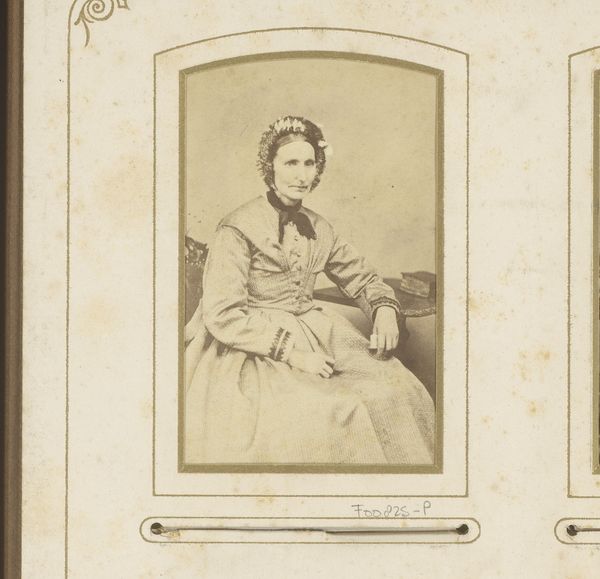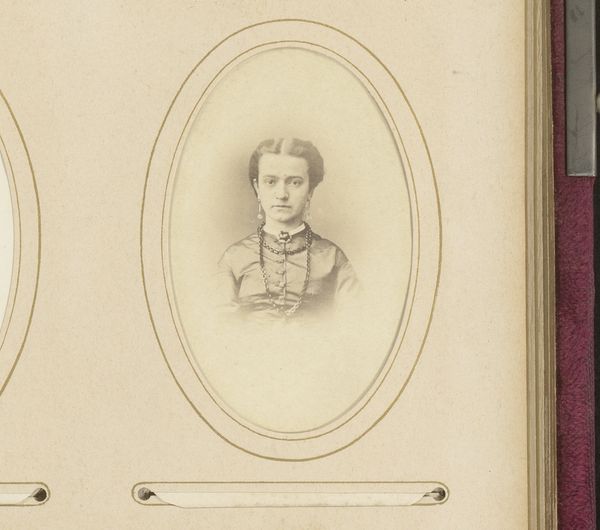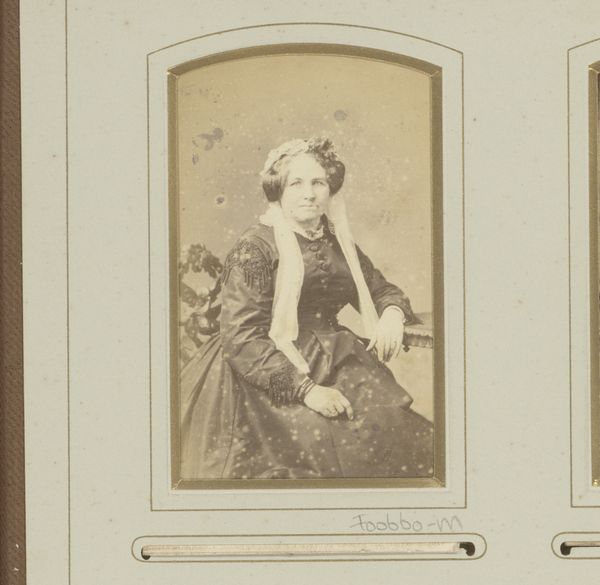
Fotoreproductie van een geschilderd portret van een vrouw, aangeduid als oma Ghesquiere 1850 - 1892
0:00
0:00
photography
#
portrait
#
photography
#
genre-painting
#
realism
Dimensions: height 85 mm, width 51 mm
Copyright: Rijks Museum: Open Domain
Curator: Here we have a photographic reproduction of a painted portrait, titled “Fotoreproductie van een geschilderd portret van een vrouw, aangeduid als oma Ghesquiere,” or “Photographic reproduction of a painted portrait of a woman, referred to as Grandma Ghesquiere.” It was made sometime between 1850 and 1892 by Charles D'Hoy. Editor: Gosh, she seems… serious. The way she stares out, almost like she knows the weight of generations rests on her shoulders. The soft, sepia tones kind of soften the blow, but those eyes are intense. Curator: Precisely. Consider the historical moment—photography offered new forms of representation, yet portraiture, traditionally the domain of the wealthy, sought to democratize access to image making. The gaze becomes a potent site for projecting power, lineage, and even anxieties about societal shifts. The lace bonnet and simple jewelry hint at a certain bourgeois respectability. Editor: But is it, though? To me, that bonnet seems almost like a fragile crown, doesn't it? And the dress, the way it catches the light, almost shimmering—I feel like there's this hidden story there, something that’s being played down. Curator: Indeed. The sitter’s self-presentation is a conscious performance, mediated by both the photographer and her own desires. One has to ask questions about who had access to even have such photographs taken and circulated at the time, or to have portraits painted to begin with. This then brings up the importance of portraiture to maintaining the visual language of social class, and the ways that such images were used to establish or destabilize social positions in broader cultural life. Editor: Grandma Ghesquiere probably had no idea her serious expression would trigger such thought centuries later! Looking at the overall sepia color is oddly soothing; it transports me back. Curator: Well, it is exactly this potential for contemporary engagement with such past portraits that underscores the crucial connection between photographic reproduction, art, social identities, and social contexts. Thank you for this lovely reflection. Editor: Thank you for lending me your expertise, this insight into Grandma Ghesquiere has been illuminating.
Comments
No comments
Be the first to comment and join the conversation on the ultimate creative platform.
